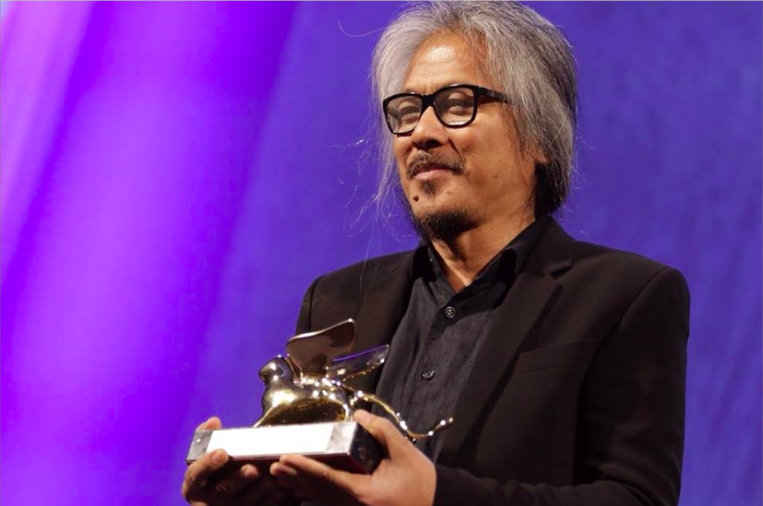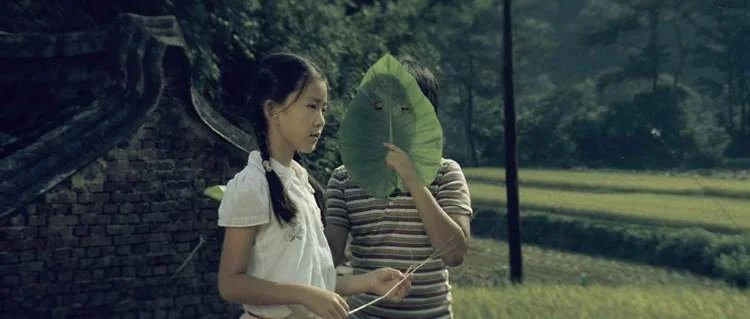GME Highlights Work by Asian Filmmakers We Distribute on Digital Formats
/FILMMAKER LAV DIAZ. SOURCE: IMDb.
GME is expanding its international distribution reach and is thrilled to incorporate works by Asian filmmakers, including Lav Diaz (Philippines), Hou Hsiao-hsien (Taiwan), and Apichatpong Weerasethakul (Thailand). These films span narrative and experimental modalities and are available to the North American university market in digital formats.
Diaz's first major epic, BATANG WEST SIDE (2001), has recently entered GME's collection as both a DVD and DSL/DVD bundle. In this powerful contemporary portrait of the Filipino diaspora in New York and New Jersey, a Filipino-born detective investigates the murder of Hanzel Harana, a Filipino teenager, and must plod along with tenacity to break through the wall of silence surrounding the boy’s death.
BATANG WEST SIDE (2001). SOURCE: GARTENBERG MEDIA ENTERPRISES.
BATANG WEST SIDE is notable for its length. In the booklet accompanying this DVD release, Diaz notes: "BATANG WEST SIDE is five hours long. For many this is an issue… [but] I believe the masses have the ability to transcend the standards they normally use in apprehending the arts. Allow works of proportion and beauty to exist, and we will develop an audience with philosophies lofty and profound enough to properly appreciate the art of cinema… I never intended to make BATANG WEST SIDE five hours long. I simply followed the cutting and joining together of various scenes… I allowed it to flow naturally… I refuse to follow the dictates of industry… I refuse to compromise the integrity of the work to please limiting, emasculating ‘tradition’." Diaz goes on to say: "The objective of BATANG WEST SIDE [is] the examination of the Filipino consciousness. Why are the Philippines the way they are now? The Filipino people? Philippine cinema?... Ultimately, the objective of BATANG WEST SIDE is simple: change. Whoever wishes to hinder this film is an enemy of change. Whoever is an enemy of change is an enemy of Philippine Cinema.”
This release of BATANG WEST SIDE from the Austrian Film Museum also features Diaz’s 2018 short THE BOY WHO CHOSE THE EARTH and a 20-page booklet consisting of an interview with Diaz himself, as well as a conversation about BATANG WEST SIDE between curator Christoph Huber and film writer Jurij Meden, and an essay by Viennale artistic director Eva Sangiorgi about THE BOY WHO CHOSE EARTH.
THE GREEN, GREEN GRASS OF HOME (1982). SOURCE: GARTENBERG MEDIA ENTERPRISES.
The most dynamic filmmaker of the Taiwanese New Wave, Hou Hsiao-hsien has become one of the most important filmmakers in world cinema. His recognizable, contemplative style has influenced a whole generation of filmmakers in East Asia and beyond.
CINEMATEK has gathered three early films on the three-disc publication HOU HSIAO-HSIEN: EARLY WORKS: the romantic comedies CUTE GIRL (1980) and THE GREEN, GREEN GRASS OF HOME (1982) which Hou made for the Central Motion Picture Corporation (with its policy of “Healthy Realism") and THE BOYS FROM FENGKUEI (1983), considered to be the turning point both cinematographically and aesthetically in his career.
THE BOYS FROM FENGKUEI (1983). SOURCE: GARTENBERG MEDIA ENTERPRISES.
This collection is currently distributed by GME on DVD to the North American university market, and all three films have been restored by CINEMATEK under supervision of Hou Hsiao-Hsien and in collaboration with the Film Foundation (World Cinema Project). Every film is accompanied by an audiovisual essay by Cristina Álvarez López and Adrian Martin. In the accompanying booklet, Tom Paulus (University of Antwerp) comments on the early days of Hou Hsiao-Hsien's career.
With his debut feature from 2000, MYSTERIOUS OBJECT AT NOON, acclaimed Thai filmmaker Apichatpong Weerasethakul expertly blended cinematic fact and fiction in a manner that nearly 25 years later proves difficult to categorize. A low-fi "genre bender," independently produced on a shoestring budget and subsequently endangered by neglect, MYSTERIOUS OBJECT AT NOON has now been meticulously restored by the Austrian Film Museum and the Film Foundation from the best surviving elements.
This DVD release (also available as a DSL/DVD bundle) includes three of the filmmaker's short works, selected by the director himself: THIRDWORLD (1997), WORLDLY DESIRES (2005) and MONSOON (2011), plus the Austrian Film Museum's now out-of-print 255-page monograph from 2009 on Weerasethakul and his films as an exclusive DVD-ROM feature.
MYSTERIOUS OBJECT AT NOON (2000). SOURCE: GARTENBERG MEDIA ENTERPRISES.
This experimental documentary employs the "exquisite corpse" party game as a structural element, with Weerasethakul and his film crew traveling across Thailand, encountering people from various walks of life, and asking them to add words to an ongoing story. The final product interweaves this footage with interviews and the resulting story being "acted out."
MYSTERIOUS OBJECT AT NOON premiered at the International Film Festival Rotterdam in 2000 and later had its North American premiere at the Vancouver International Film Festival. While it initially received little attention in its native country, the film was praised by critics internationally, with Elvis Mitchell of the New York Times writing: "Mr. Weerasethakul's film is like a piece of chamber music slowly, deftly expanding into a full symphonic movement; to watch it is to enter a fugue state that has the music and rhythms of another culture. It's really a movie that requires listening, reminding us that the medium did become talking pictures at one point."






